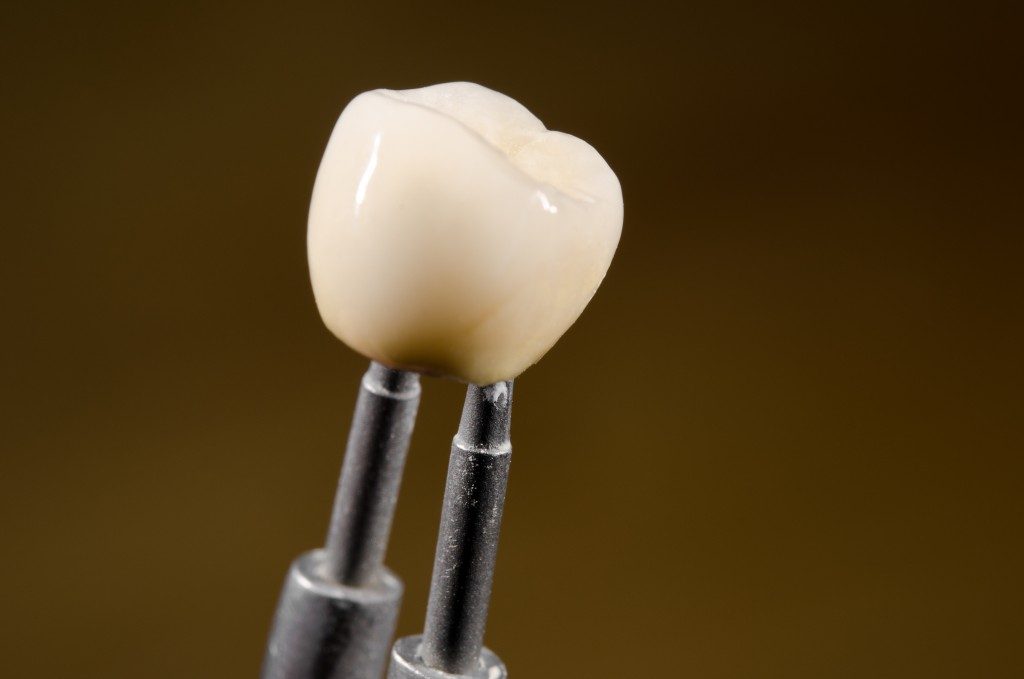Dental crowns can be best described as a cap placed over a tooth. It comes in the shape of the tooth and is used to restore the strength, size, shape, and appearance of the tooth. When installed, the crown encases the tooth’s entire visible part. Dental crowns are often used for protection against decay, to hide cracks, to restore broken teeth and to hold bridges in place.
Sometimes a person in Townsville could be looking for cosmetic dentistry procedures and meet a recommendation to get dental crowns. Here, the crown could also cover discolored teeth or cover a dental implant. Generally, crowns are ideal for cosmetic modifications. That said, the following are the most commonly used materials in the making of dental crowns:
Gold
Golden crowns were the most frequently used material in the market for a long time. Gold is very soft and cannot be used for crowns, so it is typically alloyed. Gold crowns have some benefits. For starters, it is malleable, and so one can create thin crowns that will result in a little filing. Secondly, gold is durable. Grinding or clenching may cause a slight change in the crowns, but you will still be able to go for decades not ever needing a replacement. Lastly, gold crowns do not react to the mouth tissues. The only downside for these crowns is the appearance.
Porcelain
 Porcelain crowns are perfect for restoring a natural smile. You will enjoy benefits like uniformity. Porcelain is realistic enough to match the size and shape of your teeth and looks like it is real. Secondly, it is sturdy and offers excellent resistance to damage. It also provides a buffer for cold and hot sensations so that you experience little sensitivity. The disadvantage of porcelain is that the material can eat away at the neighboring teeth. The material is also thick so that your tooth will need a lot of filing before fitting. You will typically replace porcelain crowns after ten years.
Porcelain crowns are perfect for restoring a natural smile. You will enjoy benefits like uniformity. Porcelain is realistic enough to match the size and shape of your teeth and looks like it is real. Secondly, it is sturdy and offers excellent resistance to damage. It also provides a buffer for cold and hot sensations so that you experience little sensitivity. The disadvantage of porcelain is that the material can eat away at the neighboring teeth. The material is also thick so that your tooth will need a lot of filing before fitting. You will typically replace porcelain crowns after ten years.
Metal bonded with porcelain
Combining porcelain and metal forms a functional and long lasting crown. The most commonly used metal here is gold. Gold layers are fitted with a final porcelain layer to change the appearance. The drawback for these crowns is that the metal could discolor the gum. These crowns are perfect for patients for whom grinding is an issue, but they do not like having all gold crowns.
Zirconia
This material mitigates the disadvantages of porcelain and golden crowns. The crowns mimic some properties found in ceramics. They are sturdy and can be finished off with porcelain. They are like real teeth and have little brittleness.
Composite resin
This type of dental crown is the most affordable. You will need to replace the crowns much more often though since composite resin crowns are not very durable. Go for this option if you are looking for a temporary crown.
Before the dentist begins to fit a crown, they will numb your gum and the tooth and fill it down along the surface you chew on. The amount of filing will depend on the type of crown you need. After reshaping the tooth, they make an impression of the tooth that forms the basis for the crown. After about a fortnight, you can then receive a permanent crown.
